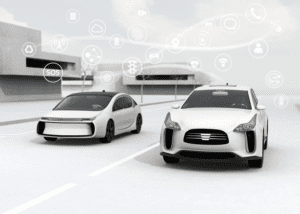As the Automotive Industry Embraces e-Mobility Services and Connected Vehicles, IT Infrastructure Has to Adjust
Credit to Author: Reiner Manger| Date: Thu, 08 Aug 2019 14:18:52 +0000
According to McKinsey & Company, nearly 100 million lines of software code are needed to control and operate the subsystems that make up a modern automobile. By 2030 that software will represent up to 30% of the value of the vehicle. In effect, automobiles have become data centers on wheels, and, like data centers, communications and connectivity are key to making sure that operations are highly available, safe and reliable.

As many in the automotive industry transition from their traditional role of auto manufacturer to mobility service provider, the notion of large networks of connected vehicles will prompt rethinking of both business models and the IT systems that support them. In fact, technology trends such as advanced connectivity and big data pose both new opportunities and risks:
- Opportunity: Monetization of data – The ability to gather and analyze data is emerging as a significant competitive advantage. Those in possession of customer data are in a position to develop products and services that are much more in tune with consumer tastes. In some cases, auto companies will partner with other specialty companies such as GPS providers to develop highly customized offerings based on converged global positioning and weather data. The ability to monetize data will depend upon the organization’s capability to provide a high-quality user experience based on real-time information that responds quickly to driver needs.
- Risk: Cybersecurity – Most cars of today have multiple small computers that control the car (e.g., engine management, media management) but these are not open systems. It would be difficult for a potential hacker to connect to a car today. In the future, however, cybersecurity threats will grow as the car gets more connected to both service providers and to other cars. More communication and interfaces between the car and the outside world present more risk that someone abuses these connections.
- Opportunity: Software driven services – With services such as peer-to-peer ride sharing, easy route planning, and simplified payments gaining rapid traction, offering riders such a value-add experience represents new, profitable potential sources of income. For example, consider the value for those entering any city of a real-time software system that informs the driver of available parking spaces on nearby streets. Time is no longer wasted searching fruitlessly with no direction or plan in mind. Such a system might even allow the driver to leave his or her vehicle in front of a specific building, allowing the car to drive itself to an available parking spot.
- Risk: Latency – Technologies such as self-driving cars will need the capabilities to very quickly start and stop in order to ensure passenger safety. Such data-driven demand, where low latency of systems and quick data management are critical will require proven, highly-secured IT edge data center infrastructures. Today, most experts believe it will not be feasible to use standard colocation IT data centers to provide that data the car requires within the time period that is needed. Therefore, the compute power will move closer to the cars. Auto manufacturers will likely partner up with IT service providers to build a common network that can support electric, hybrid and autonomous connected vehicles.
IT Solutions for the e-Mobility Business Model
Today, Schneider Electric solutions help automotive industry stakeholders adjust to the e-Mobility business model. Scalable and modular IT infrastructure architectures assure flexibility and cost savings when addressing difficult-to-forecast future growth in new business areas. By taking into account both the opportunities and risks involved in transitioning to a more connected network of vehicles, through offerings such as micro data centers, pre-fab data centers, sophisticated IT network monitoring systems, automation and control systems, and data analysis software, a mobile communication architecture exists that will help auto manufacturers to better adapt.
To learn more about how mobility architectures can help to enable automobile industry modernization and expansion, visit our Automotive and Mobility Solutions web site.
The post As the Automotive Industry Embraces e-Mobility Services and Connected Vehicles, IT Infrastructure Has to Adjust appeared first on Schneider Electric Blog.